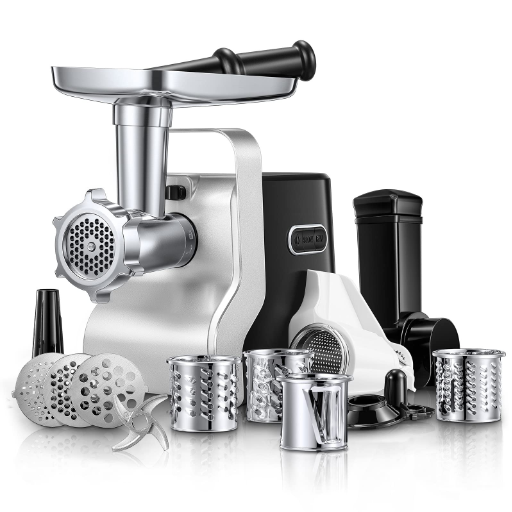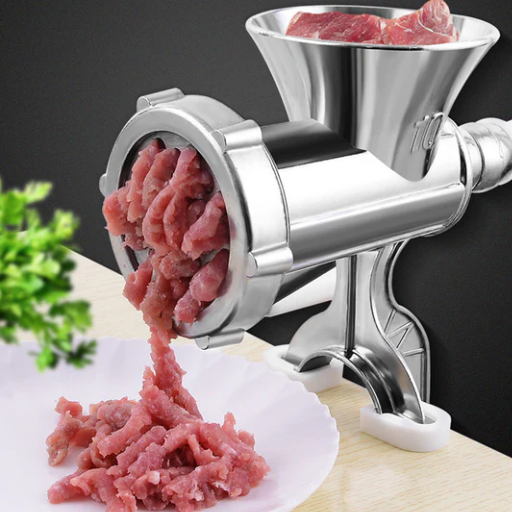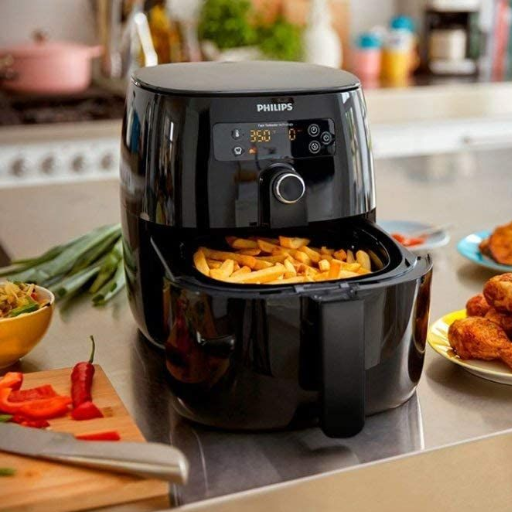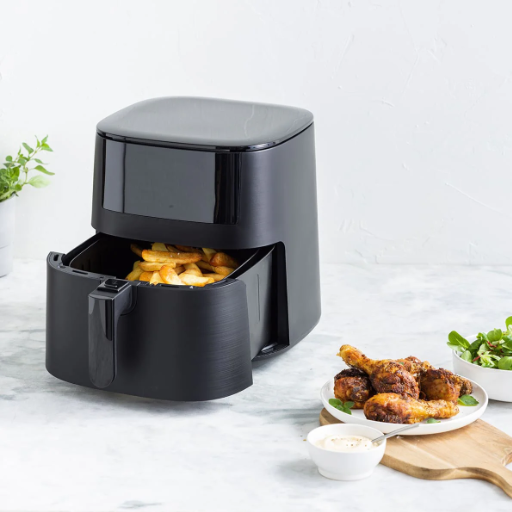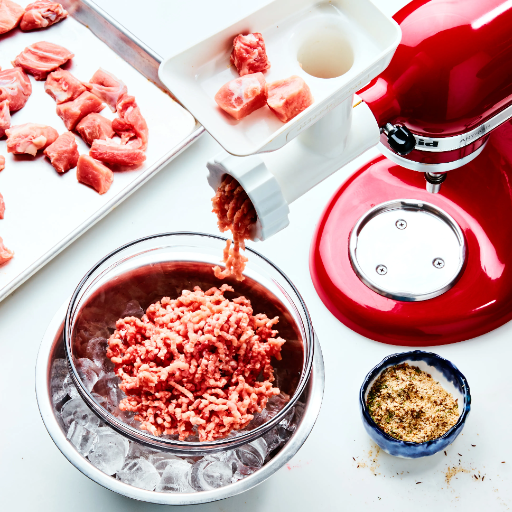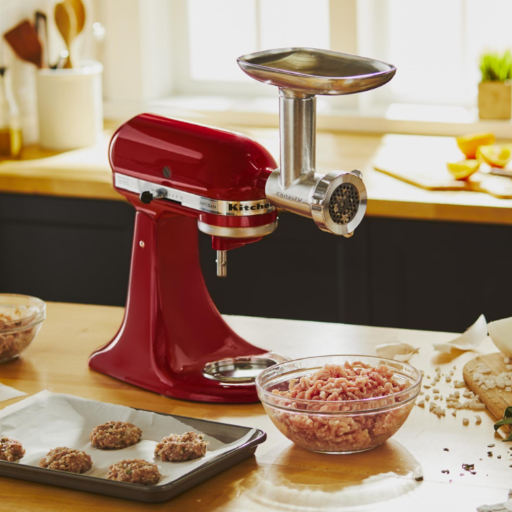Granite stock pots are the epitome of durable cookware, merging beauty with practicality. It doesn’t matter if you are cooking rich soups, generous family-sized meals, or simmering stocks, a premium granite stock pot will endure everything while performing well consistently. But with hundreds of choices to pick from, how do you know which one deserves your money? This guide will explain the most important features, and granite stock pot advantages, and offer vital tips for making the right choice based on your cooking habits. So, by the time you finish reading this article, you will know exactly what a granite stock pot is, why every kitchen needs one, and how it will change the way you cook for the better.
What Are the Benefits of Using a Granite Stock Pot?
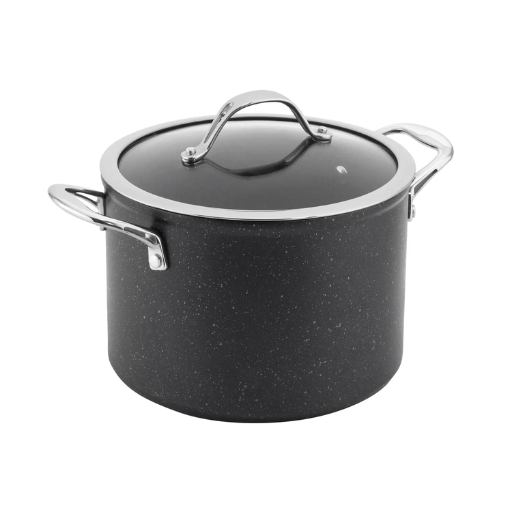
Granite stock pots provide different advantages that make them a useful tool in any kitchen. Here are the most noteworthy:
- High durability – Granite Cookware is famous for its high strength. It can be used at high temperatures and for extended periods of time without chipping or scratching differently than most utensils.
- Non-stick surface – A majority of granite stock pots are coated with non-stick surfaces, meaning food will no longer get stuck making the cookware easier to clean while reducing the oil required during the cooking.
- Even Heat Distribution – The disposition of the material guarantees that the heat is evenly distributed throughout the pot. This reduces the risks of having hot spots which prevents unevenly cooked meals.
- Lightweight Design – Compared to cast iron counterparts, granite stock pots are often lightweight and easy to handle. This makes them convenient for regular use.
- Aesthetic Appeal – The elegant and polished finish adds beauty to the kitchen and serves as a remarkable functional piece.
Granite stock pots provide outstanding benefits for everyday meals as well as complex recipes that require specific techniques by delivering exceptional performance with each specialization of the pots.
Why Choose Granite Ware for Soups and Stews?
Granite ware stock pots are very effective for soups and stews because of how they combine qualities that facilitate cooking. The enamel coating gives granite ware stock pots surfaces that do not absorb stains and odors. This means that delicate flavors and aromas in broths and stews would remain untarnished. It is also helpful that these pots have good heat conductivity because soup or stew requires gentle simmering for hours to build depth and richness. These pots get stubborn with overheating and distribute it evenly across their surfaces to prevent hot spots.
Apart from their stoutness, granite stock pots work well when it comes to heat retention. This helps dishes stay warm for a while. This is especially useful aide when dealing with one-pot meals or slow-cooked recipes. These pots can endure high temperatures without warping or losing their structural stamina, therefore extending cooking times for complex stews without risk. Like explained above, granite ware is the safest and the most eco-friendly option available. Since granite stock pots are non-reactive, one does not need to worry about toxic chemicals leaching into their meals. Those needing a practical and elegant approach towards making hearty soups or stews will find that granite ware fulfills the needs of both the home and professional chefs with its effective and safety oriented design.
What Makes Granite Stock Pots Easy to Clean?
Granite stock pots are extremely easy to clean because they do not allow for food remnants or grease to stay on the smooth non porous surfaces. This is true for the enamel coat which is usually put on these pots. The enamel yields a slick finish that does not stain, allows for residues to build up to minimal levels, and is ideal even after cooking sticky or acidic foods. In addition to this, granite ware’s durabilty means these pots can be used with weak cleansing agents and light scrubbing ensuring that they remain unhygienic and clean. A great number of modern granite stock pots are dish washer friendly which makes cleaning easy for busy families or professional cooks. These types of pots are ideally convenient and low-maintenance cookware.
What Should You Look for in a Granite Stock Pot?
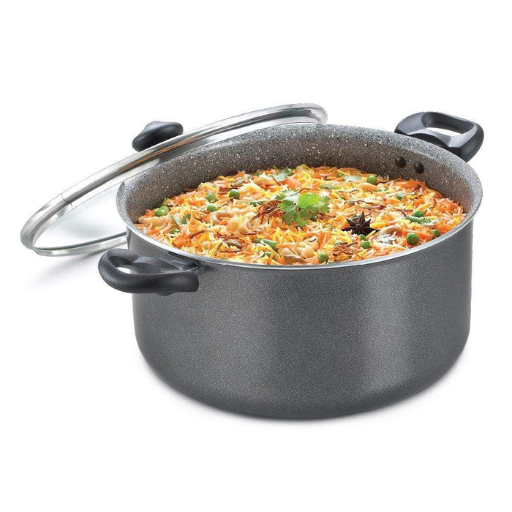
Remember to prioritize the following while selecting a granite stock pot:
- Material Specification: Check if the pot is made from granite-coated steel, as this will make the stock pot last longer and help in efficient heat distribution.
- Size and Volume: Choose a size that works for you; whether you cook for the family or have gatherings.
- Nonstick Attribute: Seek a reputable brand that specializes in nonstick coatings that prevents food from sticking and makes cleaning simpler.
- Compatibility: Make sure the stock pot works with your setup: gas, electric, and induction cooktops.
- Safety options: Protect the user with oven safe handles and lids that are fitted to the stock pot during cooking.
- Maintenance Requirements: Look for pots that are dishwasher safe and easy to clean.
What Are the Key Features of a Stock Pot with Lid?
In a stock pot with a lid, the following features have critical bearing on effectiveness, safety, and overall durability.
- Material Composition: Stock pots of superior quality are made out of stainless steel, aluminum, copper, or some combination of those materials. Stainless steel with an aluminum or copper core offers the best heat distribution and copper tri-ply is even better. For example, tri-ply stainless steel stock pots evenly distribute heat and do not warp over time.
- Capacity: Most stock pots come in 6 quart to 20 quart sizes, though, larger sizes are available. A 12-quart pot is perfect for households, while home chefs may need larger ones for commercial purposes.
- Heat Conductivity: Overhead heat will be evenly distributed and effective stir frying will occur due to the shape of these materials, for example copper and aluminum. Aluminum is five times thermally conductive than stainless steel making them useful for high temperature jobs.
- Lid Design: Good foil lids capture heat and moisture while making sure food stays warm, glass lids are easy to see through while keeping the heat containing features. Look for stainless steel lids to ensure easy viewing and heat retention, that way no temperature is wasted.
- Durability and Resistance: The pot should also be checked to see if it resists rust and corrosion, especially if exposed to acidic components such as tomatoes or vinegar. High-end 18/10(18% chromium and 10% nickel) stainless steel renowned for its heavy-duty properties, weakly graded, rusts less and does not stain easily while being subjected to extreme temperatures.
Choosing a stock pot with these characteristics provides dependable use, extended stock pot lifespan, and a safer and more efficient cooking experience.
What Size Stock Pot Is Best for Your Needs?
The amount of food a home or business regularly prepares dominates the ideal size of the stock pot. a household or individual would only need a 6 quart stock pot to prepare soup, stew, or boil pasta. Larger families or those who often cook in bulk can still maintain flexibility with an 8-12 quart.
For cooking aficionados, professionals, or people who routinely prepare items in bulk, such as stock for freezing, a stock pot of at least 16 – 20 quarts or more may be helpful. It allows for the cooking of large volumes all in one go and removes the hassle of preparing several batches. Also keep in mind the actual dimensions and limits of your stove; larger pots need sufficient burners to heat all the contents effectively and evenly. Considering these factors helps you choose a stock pot that meets your culinary needs and kitchen resources.
How Do Customer Reviews Reflect the Quality of Granite Stock Pots?
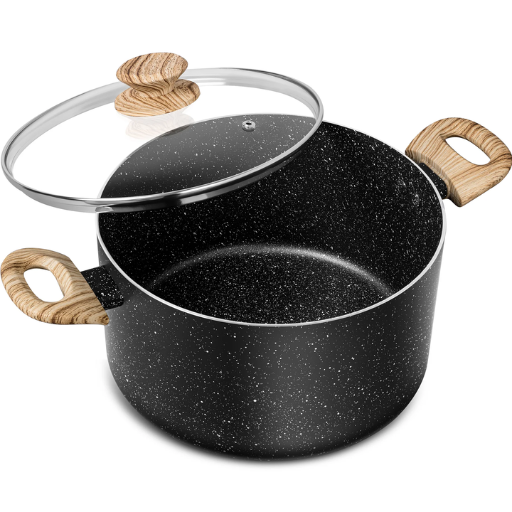
Analyzing customer reviews can reveal a lot of information regarding the quality of granite stock pots. Most positive reviews emphasize the important characteristics of durable construction, even heating, and non-stick capability, which affects cooking efficiency. Negative comments typically center around problems like chipping, discoloration, and cleaning difficulty. Additionally, many customers talk about the proper care needed to help these pots retain their quality over time. Consumers searching for relevant information about granite stock pots can understand hows these pots perform based on applicable themes found in reviews rather overcoming themes found in reviews.
What Do Customers Say About the Durability of Granite Ware?
As customers put it, the best part about granite ware is its durability, including scratch, chip, and general wear resistance with the passage of time. The structure of granite cookware’s enamel-coated steel is specially made to handle the abuse attendant with daily cooking—it takes a beating from utensils and high-temperature cooking without damage. Many users note granite ware, provided it is maintained properly, continues to be functional and visually appealing years after repeated use. Feedback does comment, however, about the potential for the enamel coating to crack or chip if, for example, the pan were to be subjected to an extreme temperature change and mishandled. In any case, most reviews seem to praise these granite pots and other cookware for their strength and usefulness, noting they stand up well for home cooks who need durable cookware.
Are There Common Complaints About Granite Stock Pots?
Even though granite stock pots have been lauded for their toughness and ability to retain heat, there are some common problems that have been reported. One major issue concerns the enamel, which has relatively protective damage, but will chip and/or crack if the pot is dropped, handled carelessly, or the pot is heated or cooled abruptly. Furthermore, users on some occasions claim that they develop discoloration or staining on the surface after prolonged use, especially when they frequently cook acidic dishes. Weighing granite stock pots also raises concern as the sturdy construction makes them heavier than other cookware materials. These lightweight and less durable options might be easier for people with limited mobility to handle. Regardless of these issues, proper care and guidelines can resolve most concerns related to the cookware’s lifespan and performance.
Can You Use Granite Stock Pots on Induction Cooktops?
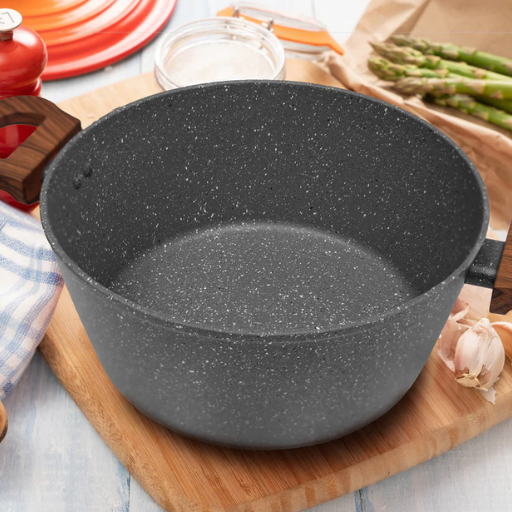
Induction cooktops are magnetic cookware. They cook using electromagnetic induction, which generates heat through a magnetic field. Therefore, granite stock pots can only be used on induction cooktops if they have a magnetic base. To check compatibility, users can perform a magnet test: a granite stock pot passes the test if a magnet sticks to the bottom. The manufacturer’s specifications should always be referred to, iron or stainless steel with a magnetic core to cook properly with induction hobs, claim users. Cooktop-compatible pots also have bases made from ferrous materials.
What Makes a Stock Pot Induction Compatible?
An induction-compatible stock pot will feature a base made of magnet-containing stainless steel or cast iron. Instead, the heat must not come from below; the electromagnetic field creates electric currents in the pot’s magnetic base. The pot generates heating on its surface. This method of transferring heat is efficient and results in quick and uniform cooking. Moreover, a range of contemporary companies have begun to add clear markings or logos indicating compatibility with induction cooktops. Other notable features such as tri-ply or multi-layered constructions with added aluminum to the magnetic core for better heat distribution while keeping inductive properties also makes the cookware more advanced. Induction cooktops will receive optimal performance from pots and pans designed with these attributes.
Are There Any Limitations to Using Granite Stock Pots on Induction?
Granite stock pots can be used on induction cooktops, but only if they possess a magnetic induction base. However, there are some restrictions users must take into account. The majority of granite-coated pots and pans are made of aluminum since it is lighter and can easily distribute heat. Since aluminum is non-magnetic, it needs a ferromagnetic layer to work properly on induction cookers. This layer, while functional, may not be as efficient as transferring energy as ferromagnetic materials such as cast iron or stainless steel.
One issue is the ability to withstand high heat overtime. Granite coatings are made to withstand lots of abuse…and high temperature cooking, but too much frequent use tends to interfere with sputtering and make induction stoves less effective. Other than that, there is a myriad of issues with induction stoves. Hot plates of different brands differ greatly, causing some loss of reliability when it comes using granite stock pots on induction cooktops. Customers must study specs in reviews detailing heat efficiency and device sturdiness before relying too heavily on granite pots for cooktops.
How Do You Properly Maintain and Care for Your Granite Stock Pot?

To properly maintain and care for your granite stock pot, follow these practices:
- Hand Wash Only – Do not place the pot in a dishwasher as the granite coating will be damaged by the strong detergents and overheating water. Instead, ‘hands’ wash using a soft sponge and mild dish soap.
- Avoid Abrasive Tools – Do not use steel wool or other cleaning tools like a sponge that is too abrasive as these may scratch the surface.
- Low to Medium Heat – Set your burn to low to medium. Too high can cause overheating which degrades the coating over time.
- Dry Thoroughly – Prevent the pot from water spots or rust on metallic parts.
- Use Wooden or Silicone Utensils – To avoid metal utensils that can scratch soften put the pot while cooking.
- Store Carefully – Place the pot in a dry spot and do not stack it with heavy cookware to avoid wear to the surface.
Following these instructions will allow you to increase the lifetime of your granite stock pot while enhancing its performance.
What Cleaning Methods Are Recommended for Granite Ware?
When cleaning granite ware, attention must be given to one’s cleaning methods as the its non-porous, porcelain-enamel surface must be protected. First, allow the cookware to cool down to room temperature as heating or cooling too fast could lead to thermal shock and damage the surface. Food residues can be scrubbed off using warm water mixed with minor amounts of dish soap and a soft sponge or cloth. The used sponges must not be abrasive as rough scouring pads or harsh chemicals can scratch the glazed finish. Stubborn stains or overly baked on food can be removed by scrubbing with baking soda and water. The washing process could also simply be soaking the cookware in warm soapy water for a few hours to allow the debris to loosen. Any metal parts of the cookware should be dried thoroughly wiped using a soft towel to prevent corrosion or mineral deposits. These mentioned steps granite ware removed without compromising its structure or the intrinsic value of why it was built sinually maintaining its durability and non-stick properties.
How to Ensure Longevity of Your Non-Stick Surface?
Adhering to proper usage and maintenance practices is vital if you wish to preserve the life of your non-stick surface. When cooking with non-stick pans, never use wooden or plastic utensils. Use silicone or other non-abrasive materials only… These items will be scrapped and will not get damaged along the way. They will be lovingly transformed into tidy heated silicone strips. The set curtain contains silicone in strips heated in a medium oven. For best results never cook them under low or medium sublamp exercises. Additionally, do not under any circumstances ever make use of cooking sprays. These sprays will turn the pan into a hollowed out rock and everything else will be sucked into the hollow.
It is advisable to wash non-stick cookware manually, using warm soapy water and with a sponge that isn’t scratchy. Harsh pads or chemicals will severely damage the coating with their fumes. Non-stick pads can harm the non-stick feature of cookware while removing anything but sticky pads. Use stick removable pad. If stuck with food residue stubbornly, fill the cookware with warm, soapy water to loosen while leaving the non-stick surface intact instead of scrubbing. Storing is just as important… Place pan protectors or towels while placing pans on another to stop exposing nicks and scratches. Following these rules will ensure optimal use and efficacy for non-stick cookware.
Reference Sources
-
Granite Cookware Guide (Cupindy): Granite cookware is lightweight, non-stick, and scratch-resistant, making it a popular choice for modern kitchens. It is free from harmful chemicals like PFOA and PTFE, ensuring safer cooking. However, the non-stick coating can wear off over time, and it is sensitive to extreme temperatures.
-
Granite Cookware Safety (Sustainable Jungle): Granite cookware is often marketed as non-toxic, but its safety depends on the brand and materials used. Many products are free from PFOA and PTFE, but some coatings may still contain harmful chemicals. The article highlights the importance of choosing reputable brands and avoiding overheating to minimize risks.
-
Debunking Myths About Granite Cookware (Natural Elements): Granite cookware does not contain actual granite but is made from materials like aluminum and ceramic with a granite-like finish. It is generally safe when used correctly, as reputable brands avoid harmful chemicals. Overheating and improper care can compromise safety.
Frequently Asked Questions (FAQs)
Q: What are the benefits of using a granite stock pot?
A: A granite stock pot provides excellent heat distribution, allowing food to cook evenly. The inert glass surface prevents sticking and is easy to clean, making it a great option for cooking soups and stews.
Q: How many quarts is the ideal size for a stock pot?
A: The ideal size depends on your cooking needs. A 12 quart stock pot is great for large batches, while a 5 quart or 7.5 qt pot is suitable for smaller meals. Consider a 12-quart stock pot for family gatherings or meal prepping.
Q: Can you use graniteware on an induction cooktop?
A: Yes, many graniteware products feature a carbon steel core which allows them to work on induction cooktops. Always check the product specifications to ensure compatibility.
Q: What is the difference between a granite stock pot and a Dutch oven?
A: A granite stock pot is typically taller and narrower, ideal for making stocks or boiling pasta, while a Dutch oven is wider and better suited for braising and slow-cooking dishes.
Q: Is graniteware safe for cooking?
A: Yes, graniteware is generally safe for cooking. It does not contain PFOA and has an inert glass surface that does not leach harmful chemicals into food, making it a safe choice for cooking.
Q: What features should I look for in a stock pot with lid?
A: Look for a stock pot with lid features such as a tight-fitting lid to retain moisture, a durable handle for easy lifting, and a carbon steel core for added strength and durability.
Q: Can I use a granite stock pot for canning?
A: While some granite stock pots can be used for canning, it’s important to ensure they are large enough, such as a 12 quart stock pot, and that they are specifically designed for that purpose to ensure safety.
Q: What is the advantage of a speckled black finish on granite stock pots?
A: The speckled black finish not only gives a classic look to the granite stock pot but also helps in hiding scratches and stains, making it easier to maintain its appearance over time.

